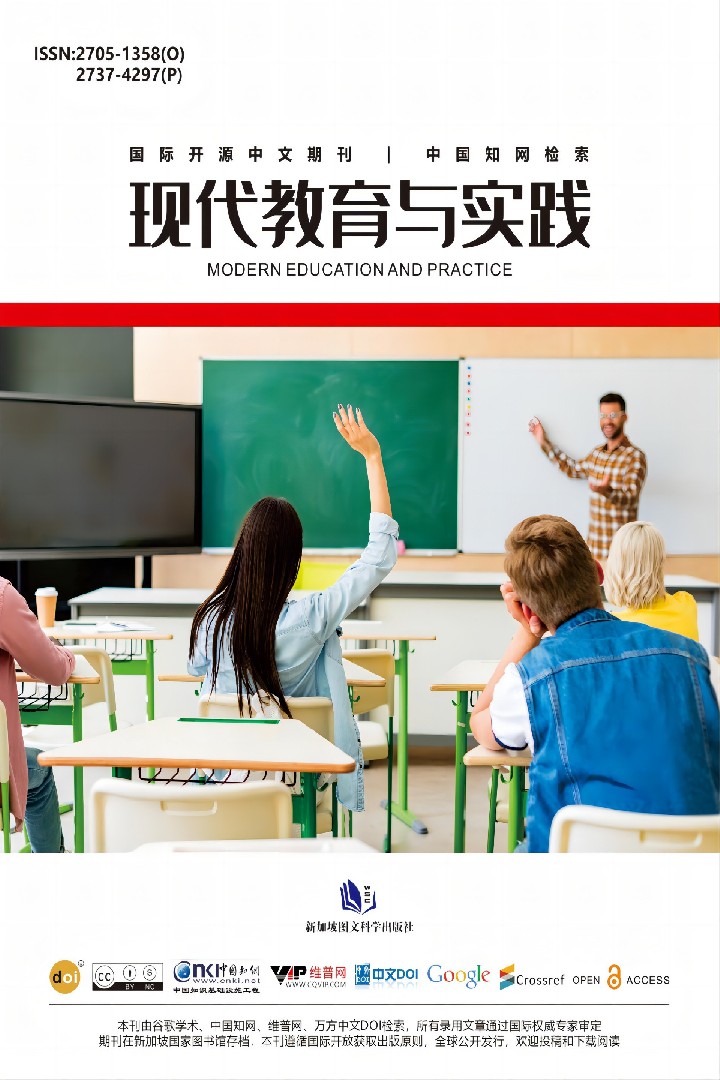作者
欧逸雅
文章摘要
生成式人工智能对教育带来的影响涉及到教育环节的许多方面。本文通过计量分析软件CiteSpace对Web of Science(WOS)核心数据库中的489篇论文进行分析并绘制图谱。总体而言,生成式人工智能在国外教育领域研究和应用尚处于初步阶段,但呈高发态势。目前该领域以医疗学科为主,其他学科发展态势微弱。从以工作原理和技术特点为主到以实证研究为主,同时对相关素质素养的培养的十分重视。未来还需进一步克服其技术限制,加强生成式人工智能在其他学科的建设,促进建立拥有先进技术的优质教育环境。
文章关键词
Chatgpt;生成式人工智能;教育领域;可视化分析
参考文献
[1] 徐刘杰,王成梁,戴坚等.国外高等职业教育研究热点——基于知识图谱的可视化分析[J].职业教育研究,2022(06):82-89.
[2] Derek John Price. (1969). Little science, big science. Columbia University Press.
[3] 刘沛森,许可峰.我国高等教育高质量发展的研究现状与热点演进——基于CiteSpace的文献可视化分析[J].广州广播电视大学学报,2023,23(06):69-76+110-111.
[4] Mbakwe, A. B., Lourentzou, I., Celi, L. A., Mechanic, O. J., & Dagan, A. (2023). ChatGPT passing USMLE shines a spotlight on the flaws of medical education. PLOS Digital Health, 2(2), e0000205.
[5] Antaki, F., Touma, S., Milad, D., El-Khoury, J., & Duval, R. (2023). Evaluating the Performance of ChatGPT in Ophthalmology: An Analysis of its Successes and Shortcomings. Ophthalmology Science, 100324.
[6] 刘奕杉,王玉琳,李明鑫.词频分析法中高频词阈值界定方法适用性的实证分析[J].数字图书馆论坛,2017(09):42-49.
[7] 刘沛森,许可峰.我国高等教育高质量发展的研究现状与热点演进——基于CiteSpace的文献可视化分析[J].广州广播电视大学学报,2023,23(06):69-76+110-111.
[8] 陈悦,陈超美,胡志刚,等.引文空间分析原理与应用——Citespace实用指南[M].科学出版社,2014.
[9] Bauer, E., Greisel, M., Kuznetsov, I., Berndt, M., Kollar, I., Dresel, M., Fischer, M. R., & Fischer, F. (2023). Using natural language processing to support peer‐feedback in the age of artificial intelligence: A cross‐disciplinary framework and a research agenda.
[10] Son, H. J., Kim, S.-J., Pak, S., & Lee, S. H. (2023). ChatGPT-assisted deep learning for diagnosing bone metastasis in bone scans: Bridging the AI Gap for Clinicians. Heliyon, 9(12), e22409.
[11] Campbell, D. J., Estephan, L. E., Sina, E., Mastrolonardo, E. V., Alapati, R., Amin, D. R., & Cottrill, E. (2023). Evaluating ChatGPT Responses on Thyroid Nodules for Patient Education. Thyroid.
[12] Zawiah, M., Al-Ashwal, F. Y., Gharaibeh, L., Farha, R. A., Alzoubi, K. H., Hammour, K. A., Qasim, Q. A., & Abrah, F. (2023). ChatGPT and Clinical Training: Perception, Concerns, and Practice of Pharm-D Students. Journal of Multidisciplinary Healthcare, 16, 4099–4110.
[13] Watari, T., Takagi, S., Sakaguchi, K., Nishizaki, Y., Shimizu, T., Yamamoto, Y., & Tokuda, Y. (2023). Performance Comparison of ChatGPT-4 and Japanese Medical Residents in the General Medicine In-Training Examination: Comparison Study. JMIR Medical Education, 9, e52202–e52202.
[14] Rau, A., Rau, S., Zoeller, D., Anna Maria Fink, Tran, H. D., Wilpert, C., Nattenmüller, J., Neubauer, J., Bamberg, F., Reisert, M., & Russe, M. (2023). A Context-based Chatbot Surpasses Radiologists and Generic ChatGPT in Following the ACR Appropriateness Guidelines. Radiology, 308(1).
[15] Lopez, M., & Goh, P.-S. (2024). Catering for the Needs of Diverse Patient Populations: Using ChatGPT to Design Case-Based Learning Scenarios. Medical Science Educator.
[16] Zou, M., & Huang, L. (2023). To use or not to use? Understanding doctoral students’ acceptance of ChatGPT in writing through technology acceptance model. Frontiers in Psychology, 14.
[17] Kumar Tiwari, C., Abass Bhat, Mohd., Tariq Khan, S., Subramaniam , R., & Atif Irshad Khan, M. (2023). What drives students toward ChatGPT? An investigation of the factors influencing adoption and usage of ChatGPT. Interactive Technology and Smart Education.
[18] Wilby, R. L., & Esson, J. (2023). AI literacy in geographic education and research: Capabilities, caveats, and criticality. The Geographical Journal.
[19] Pretorius, L. (2023). Fostering AI literacy: a teaching practice reflection. Journal of Academic Language and Learning, 17(1), T1–T8. https://research.monash.edu/en/publications/fostering-ai-literacy-a-teaching-practice-reflection
[20] Meron, Y., & Tekmen Araci, Y. (2023). Artificial intelligence in design education: evaluating ChatGPT as a virtual colleague for post-graduate course development. Design Science, 9(e30).
[21] Liu, G., & Ma, C. (2023). Measuring EFL learners’ use of ChatGPT in informal digital learning of English based on the technology acceptance model. Innovation in Language Learning and Teaching, 18(2), 1–14.
[22] Jeon, J., & Lee, S. (2023). Large language models in education: A focus on the complementary relationship between human teachers and ChatGPT. Education and Information Technologies.
Full Text:
DOI
